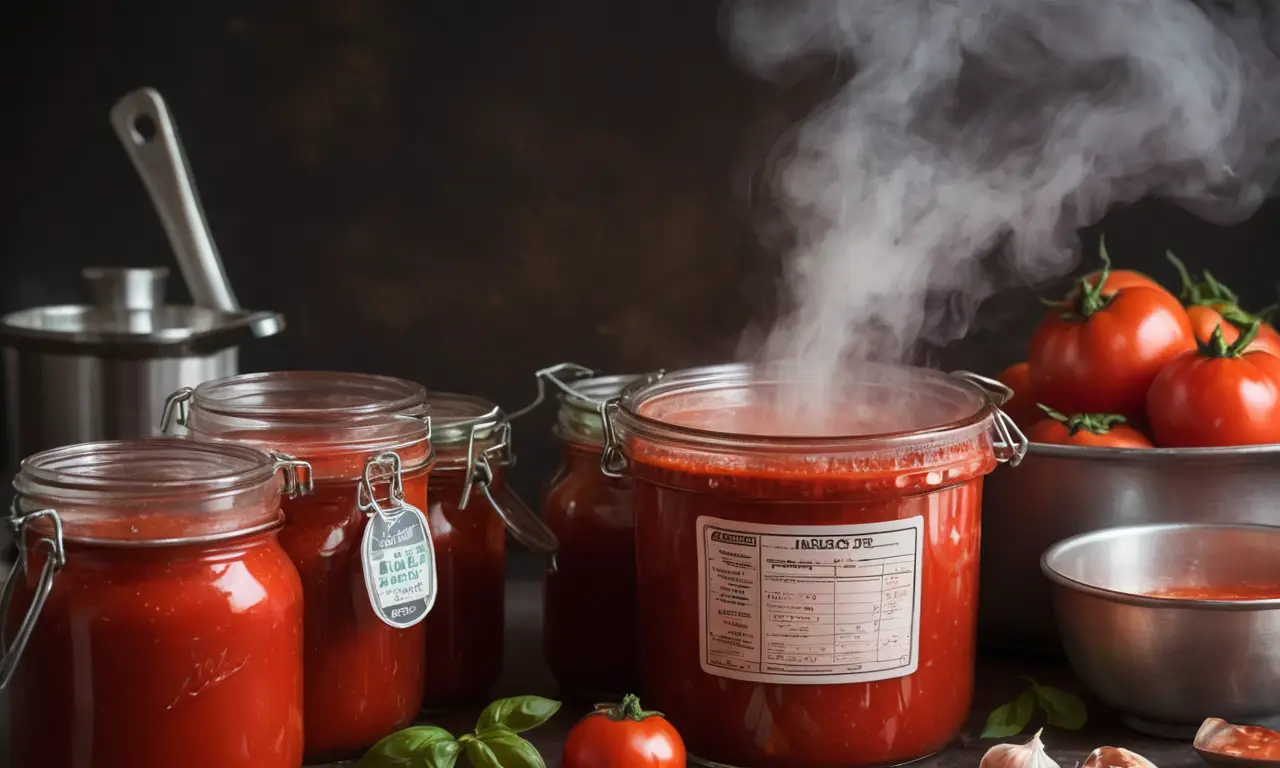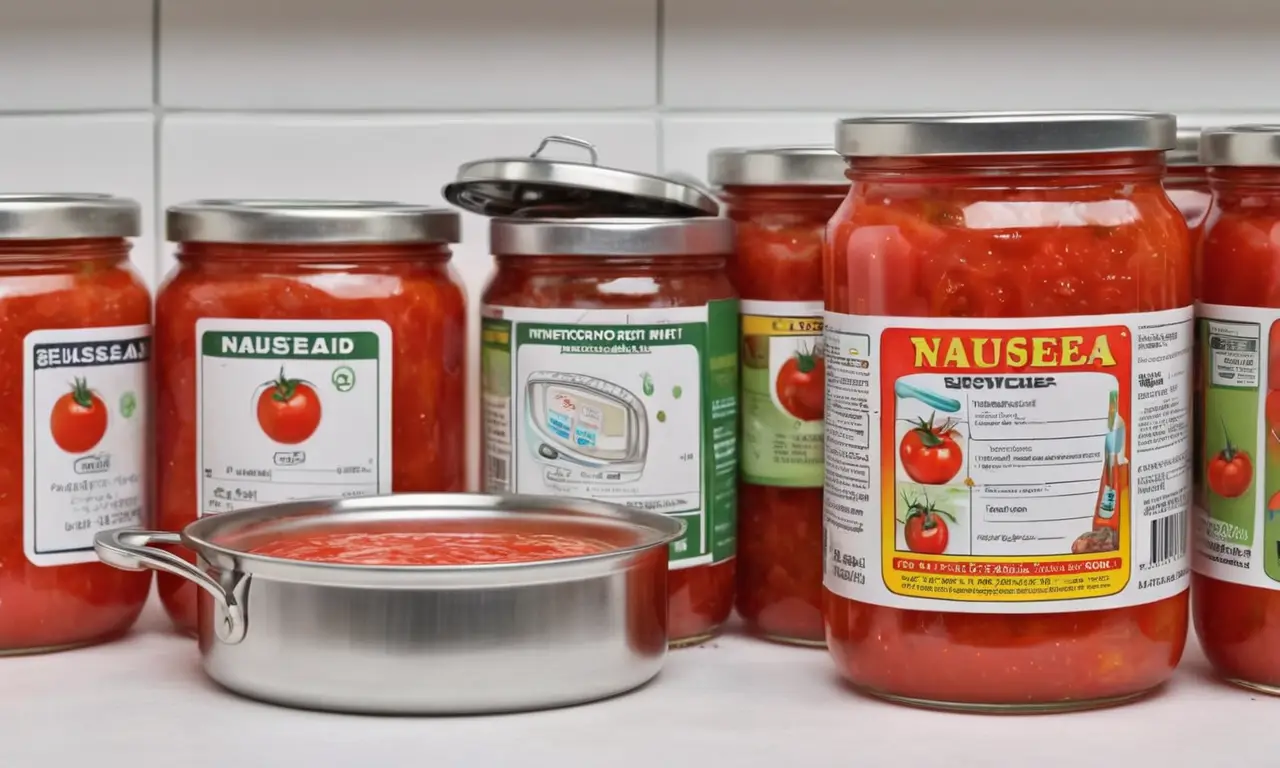
Botulism is a serious illness caused by a toxin produced by the bacterium Clostridium botulinum. While rare, it can be life-threatening. One potential source of this toxin is improperly canned or preserved tomato sauce. Understanding the symptoms, risks, and prevention methods associated with botulism in tomato sauce is crucial for ensuring food safety. This article will delve into the details of botulism in tomato sauce, providing you with the knowledge to protect yourself and your loved ones.
This article will explore the symptoms of botulism in tomato sauce, examine how this toxin can contaminate tomato-based products, discuss the various causes of botulism in food, and provide comprehensive guidelines on safe canning practices to prevent this potentially deadly illness.
Botulism Symptoms
Botulism in tomato sauce presents with a range of symptoms that typically develop within 12 to 36 hours after consuming contaminated food. However, symptoms can appear as early as 6 hours or as late as several days after ingestion. Early recognition of these symptoms is crucial for prompt medical intervention and improved outcomes.
Common symptoms include:
* Blurred vision: This often occurs first and may progress to double vision.
* Drooping eyelids (ptosis): The eyelids may become heavy and difficult to lift.
* Difficulty swallowing (dysphagia): Food may feel stuck in the throat, making it challenging to swallow.
* Slurred speech: Difficulty articulating words clearly due to muscle weakness in the mouth and tongue.
As the illness progresses, other symptoms may develop, including:
* Muscle weakness: This can affect various parts of the body, starting with the face and spreading downwards.
* Paralysis: In severe cases, paralysis can occur, affecting breathing and other vital functions.
* Nausea and vomiting: These gastrointestinal symptoms are less common but may accompany other botulism symptoms.
Tomato Sauce & Botulism

Tomato sauce, a staple in many cuisines, can become a breeding ground for Clostridium botulinum if not properly canned or preserved. This bacterium thrives in low-oxygen environments and produces the potent botulinum toxin. When tomato sauce is inadequately processed, the spores of this bacterium can survive and multiply, leading to botulism in tomato sauce.
The risk of botulism in tomato sauce is particularly high when:
* The sauce is homemade and not properly canned using a pressure canner.
* Commercially prepared tomato sauce has been stored improperly or for extended periods.
* The sauce shows signs of spoilage, such as bulging lids, discoloration, or an unusual odor.
Causes of Botulism in Food
Botulism in food occurs when Clostridium botulinum spores germinate and produce the botulinum toxin within improperly preserved foods. Several factors contribute to this risk:
- Low-acid environment: The bacterium thrives in environments with a pH above 4.6, such as canned vegetables, meats, and fish.
- Lack of oxygen: Clostridium botulinum is an anaerobic bacterium, meaning it grows best in the absence of oxygen. This makes sealed containers like cans or jars ideal for its growth.
- Improper canning techniques: Failure to follow proper canning procedures, such as using a pressure canner and achieving sufficient heat penetration, allows spores to survive and produce toxin.
Preventing Botulism From Canned Tomatoes

Preventing botulism in tomato sauce requires meticulous attention to detail during the canning process and safe storage practices.
Here are some essential tips:
- Use a pressure canner: Pressure canning is crucial for destroying botulinum spores in low-acid foods like tomatoes.
- Follow tested recipes: Always use reliable recipes from reputable sources that specify proper processing times and temperatures.
- Inspect jars carefully: Before canning, check jars for cracks or chips, as these can compromise the seal.
- Remove air bubbles: Ensure all air bubbles are removed from jars before sealing to prevent vacuum breakdown.
- Process for the recommended time: Follow the specified processing time in your recipe to ensure complete destruction of spores.
Safe Canning Practices
Safe canning practices are essential for preventing botulism and ensuring the safety of your canned goods.
Here are some key guidelines:
- Cleanliness is paramount: Wash all equipment thoroughly with hot, soapy water before use. Sterilize jars and lids in boiling water for at least 10 minutes.
- Use fresh ingredients: Start with high-quality, fresh tomatoes free from blemishes or signs of spoilage.
- Adjust acidity if necessary: Add lemon juice or citric acid to tomato sauce to lower the pH below 4.6, making it less hospitable to botulinum spores.
- Headspace is important: Leave the recommended headspace in jars to allow for expansion during processing.
- Proper sealing: Ensure lids are tightly sealed and create a vacuum seal after processing.
Conclusion
Botulism in tomato sauce is a serious health risk, but it can be effectively prevented by following safe canning practices and proper storage guidelines. By understanding the symptoms, causes, and prevention methods associated with this potentially deadly illness, you can enjoy your homemade tomato sauce with confidence. Remember to always prioritize food safety and consult reliable sources for accurate information on canning techniques.
